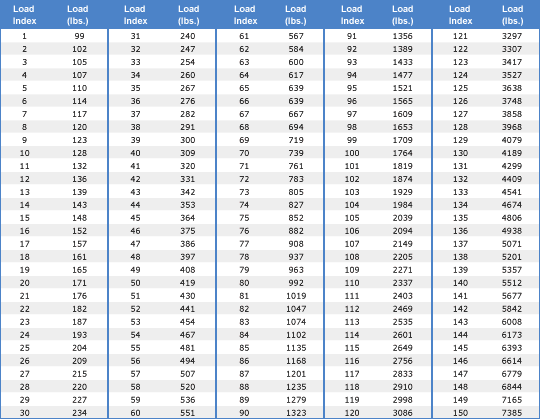
Tire Information
Your tires size can in most instances be found on the placard on the inside doorjab of the drivers side of your vehicle. However, there are times when this placard has worn off or you have upsized/downsized your tires in the past. When this is the issue you will want to look to your tires sidewall.

-
Size
The size of a tire by taking the Width of Tire (in millimeters)/ Ratio of Height to Width (Aspect Ratio)/ Diameter of Wheel (In inches). For instance the above tire is a size 215/65/15 and will be 215 millimeters wide, fit on a rim that is 15 inches and has a height to width ratio of 65%. So how do you figure your height?? (The height is calculated from the tip of the tread to the rim.) So, 215x0.65=139.75 millimeters. 139.75/25.4(how many millimeters are in and inch)=5.5 inches section height. Take that number and times by two and add the rim size as so; 5.5*2=11+15=26 inches. So your tire should be 25inches tall. Dont blame me for the crazy calculations required to get this information, I did not invent the code.
-
Speed
The speed symbol is made up of a single letter or an A with one number. It indicates the maximum speed at which the tire can carry a load corresponding to its Load Index
-
Load Index
The load index indicates the load-carrying capacity of a tire. In other words, it tells you how much weight your tire can support.
-
Inflation Pressure
This indicates the maximum operating inflation pressure of the tire. It does not indicate the manufacturer's recommended inflation pressure, nor does it indicate the proper air pressure based on the vehicle the tire is mounted on. For your vehicles recommended tire pressure consult your manual or placard.
-
Ply
Today's load range/ply ratings do not count the actual number of body ply layers used to make up the tire's internal structure, but indicate an equivalent strength compared to early bias ply tires. Most radial passenger tires have one or two body plies, and light truck tires, even those with heavy-duty ratings (10-, 12- or 14-ply rated), actually have only two or three fabric plies, or one steel body ply.
-
Treadware, Temperature, and Traction
Treadwear grades are an indication of a tire's relative wear rate. The higher the treadwear number is, the longer it should take for the tread to wear down. A control tire is assigned a grade of 100. Other tires are compared to the control tire. For example, a tire grade of 200 should wear twice as long as the control tire.
Traction grades are an indication of a tire's ability to stop on wet pavement. A higher graded tire should allow a car to stop on wet roads in a shorter distance than a tire with a lower grade. Traction is graded from highest to lowest as "AA", "A", "B", and "C".
Temperature grades are an indication of a tire's resistance to heat. Sustained high temperature (for example, driving long distances in hot weather), can cause a tire to deteriorate, leading to blowouts and tread separation. From highest to lowest, a tire's resistance to heat is graded as "A", "B", or "C".



